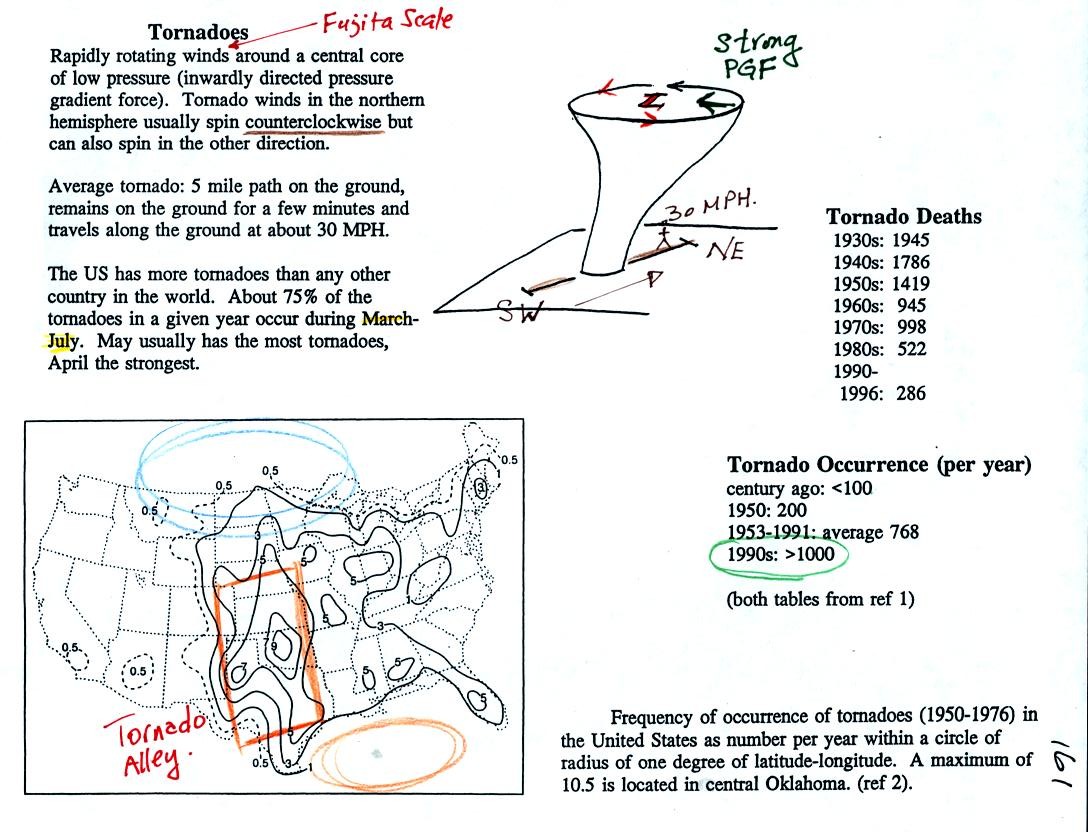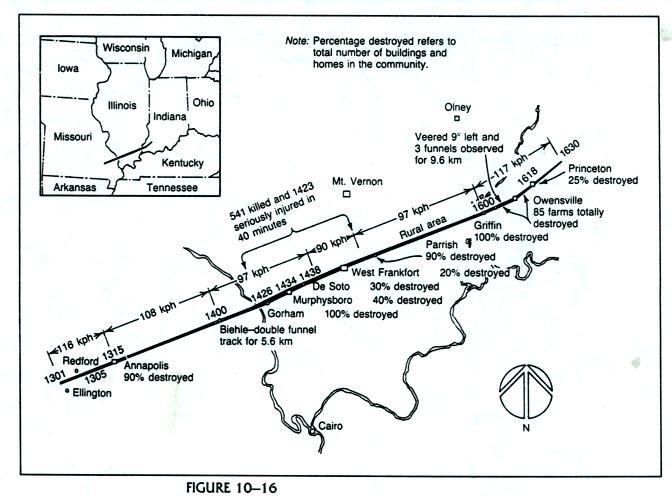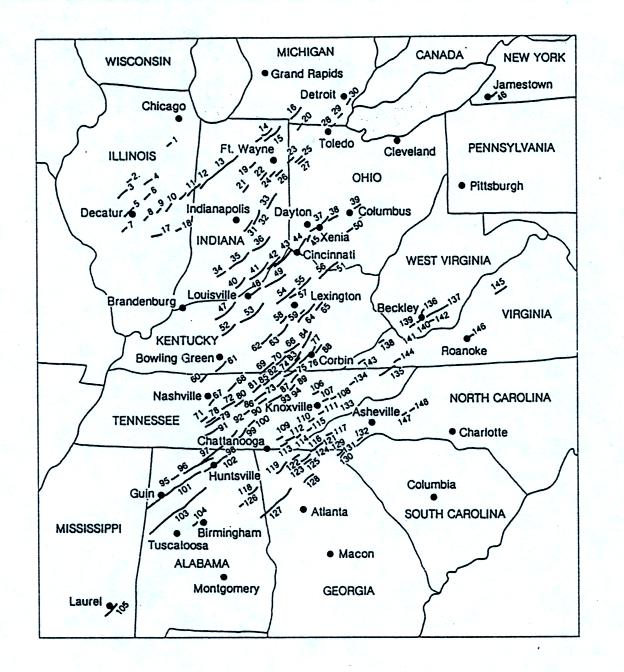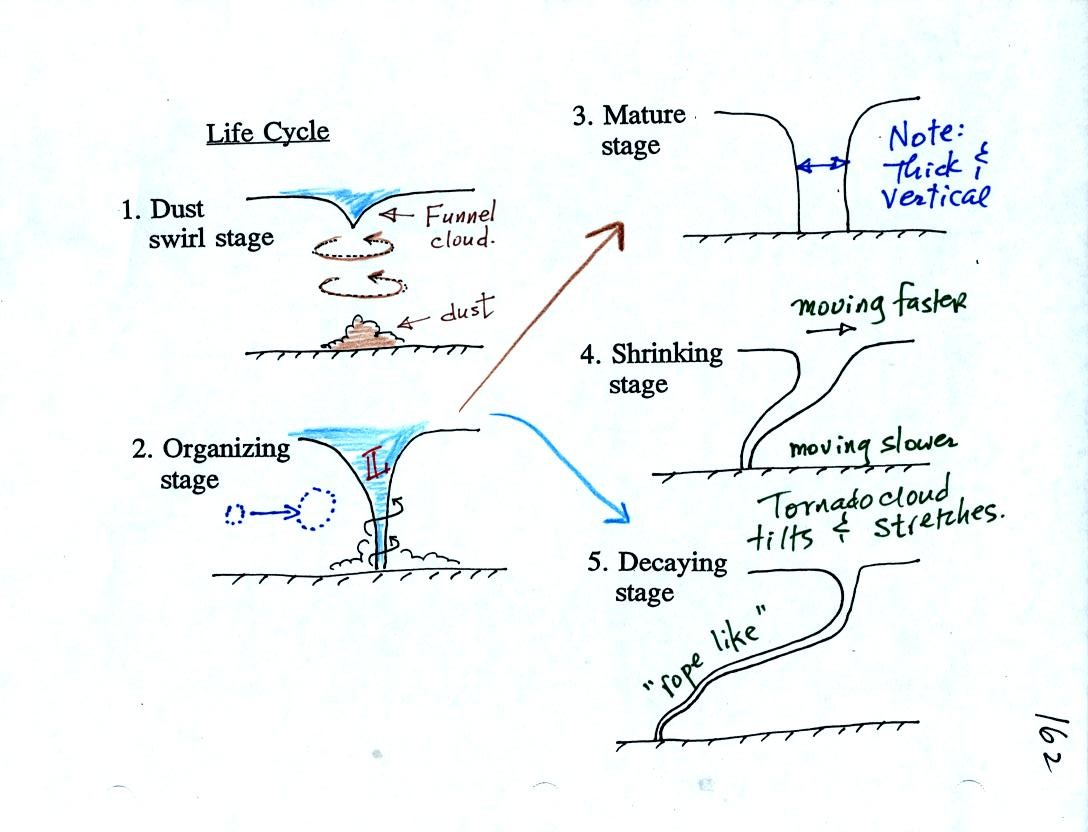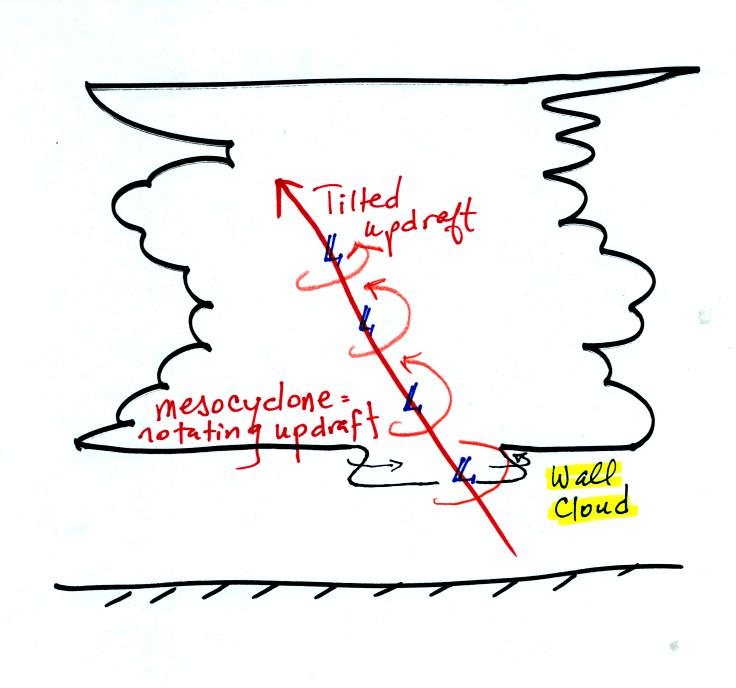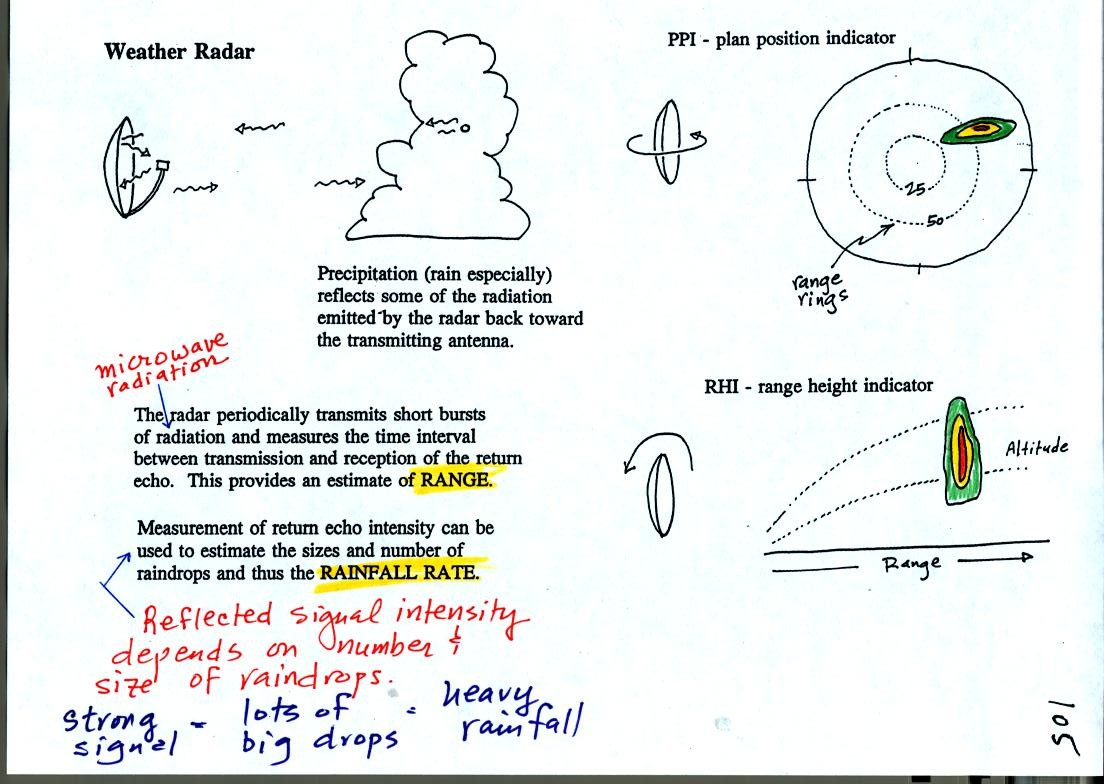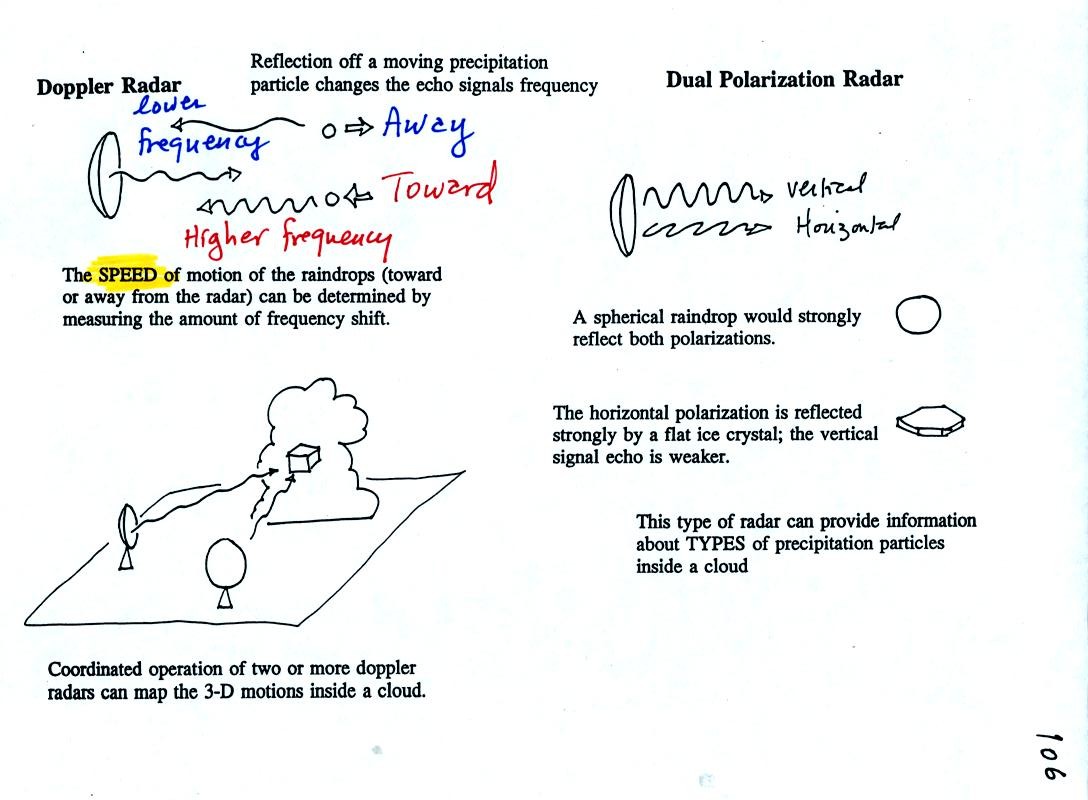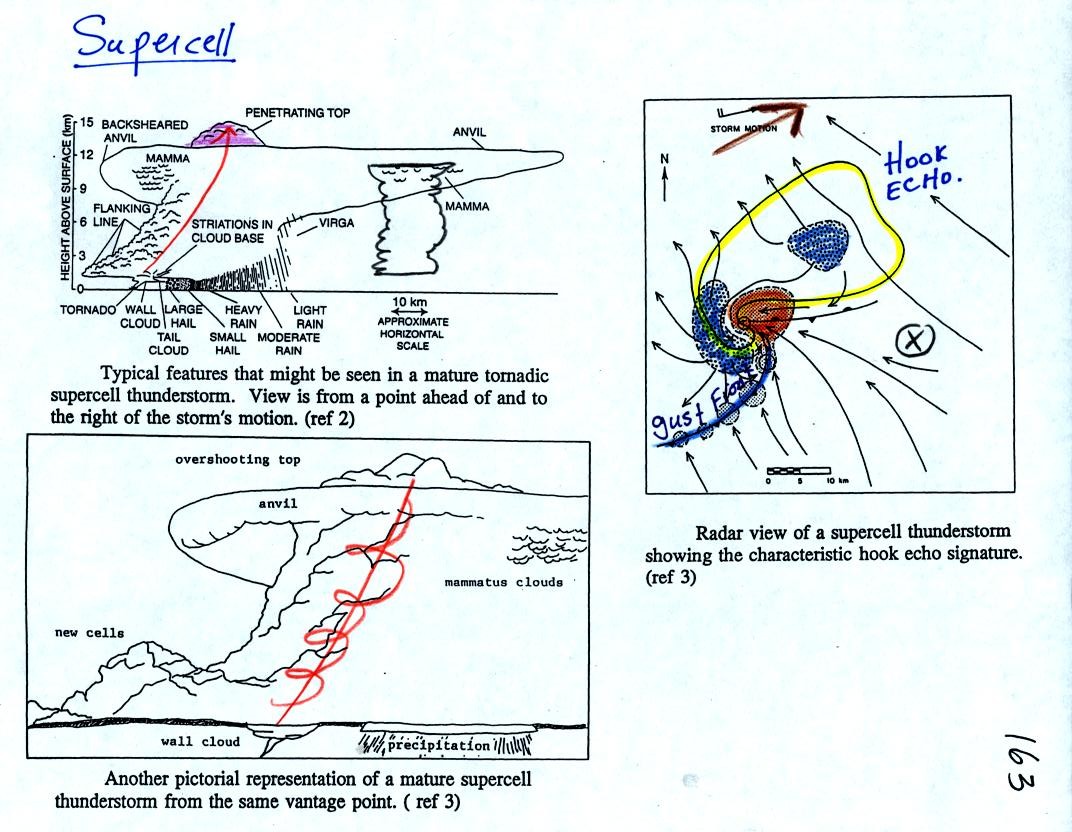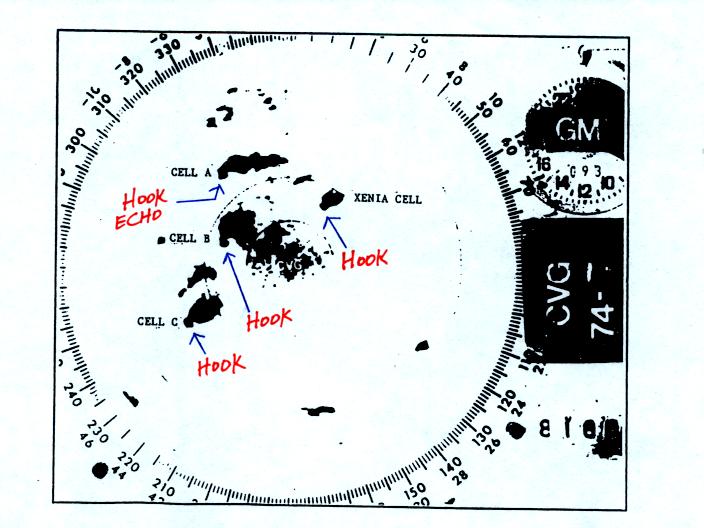54a
|
F3
|
Grand
Island, NE
|
Mar. 13,
1990
|
tornado cloud is pretty
thick and vertical
|
61f
|
F3
|
McConnell
AFB KS
|
Apr. 26,
1991
|
this is about as close to a
tornado as you're ever likely to get. Try to judge the diameter
of the tornado cloud. What direction are the tornado winds
spinning?
|
52
|
F5
|
Hesston KS
|
Mar. 13,
1990
|
Watch closely
you may see a tree or two uprooted by the tornado winds
|
51
|
F3
|
North
Platte NE
|
Jun. 25,
1989
|
Trees uprooted
and buildings lifted by the tornado winds
|
65
|
F1
|
Brainard MN
|
Jul. 5,
1991
|
It's a good
thing this was only an F1 tornado
|
57
|
F2
|
Darlington
IN
|
Jun. 1,
1990
|
Tornado cloud
without much dust
|
62b
|
F2
|
Kansas
Turnpike
|
Apr. 26,
1991
|
It's sometimes
hard to run away from a tornado. Watch closely you'll see a van
blown off the road and rolled by the tornado.
|
47
|
F2
|
Minneapolis
MN
|
Jul. 18,
1986
|
Tornado cloud
appears and disappears.
|
